Fort Walton Beach, FL
428 Mary Esther Cut Off NW Unit A,
Fort Walton Beach, FL
32548, United States
(850) 374-3595
Looking for effective treatments for sunspots? From topical creams to laser therapy, discover the best options for achieving clear, radiant skin. Visit The Beauty Experts for more information.
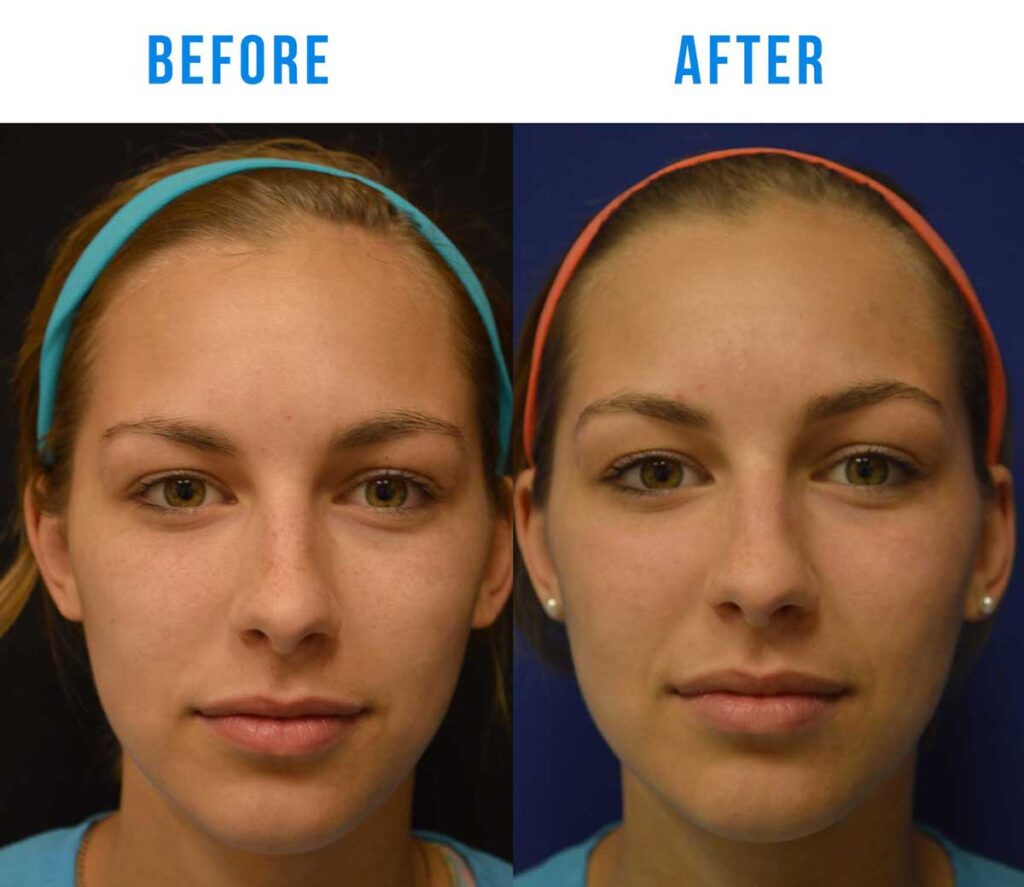
If you’re struggling with sunspots and longing for clearer, more even-toned skin, you’re not alone. Sunspots, also known as age spots or liver spots, can appear on your skin from years of sun exposure. But fret not, because there are effective treatments available to help diminish the appearance of these pesky spots. From laser therapy and chemical peels to topical creams and professional facials, there are various options to choose from. To learn more about the best treatments for sunspots, head over to The Beauty Experts, owned and operated by Tilly Souriyseng, a certified Bella Lash Trainer. With her expertise and exclusive mentorship program, she can guide you towards achieving the clear, radiant skin you’ve always desired. Contact The Beauty Experts at (850) 226-7278 or visit their website to find out more.
When it comes to treating sunspots, topical treatments are often the first line of defense. These treatments can be applied directly to the affected areas and have been proven effective in reducing the appearance of sunspots. Here are some of the most popular topical treatments for sunspots:
Hydroquinone is a commonly used ingredient in skin lightening creams and is known for its ability to reduce the production of melanin, the pigment responsible for dark spots. It works by inhibiting the enzyme involved in melanin synthesis. Hydroquinone is considered a highly effective treatment for sunspots, but it should only be used under the guidance of a dermatologist.
Retinoids, such as Retin-A and Tretinoin, are derivatives of vitamin A and are commonly used in the treatment of various skin conditions, including sunspots. They work by increasing cell turnover and promoting the growth of new, healthier skin cells. Retinoids can help fade sunspots over time and improve overall skin texture and tone.
Vitamin C is a powerful antioxidant that can help reduce the appearance of sunspots. It works by inhibiting the production of melanin and promoting collagen synthesis, which can improve the overall appearance of the skin. Vitamin C serums are readily available and can be applied topically to the affected areas.
Azelaic acid is a naturally occurring acid that has been shown to have skin-lightening and exfoliating properties. It works by reducing the production of melanin and promoting cell turnover, which can help fade sunspots. Azelaic acid is available in the form of creams and gels and is generally well-tolerated by most skin types.
Kojic acid is a natural skin-lightening agent derived from certain species of fungi. It works by inhibiting the production of melanin and can help fade sunspots over time. Kojic acid is available in the form of creams, serums, and soaps and is often used in combination with other skin-lightening ingredients for maximum effectiveness.
Chemical peels are another popular treatment option for sunspots. They involve the application of a chemical solution to the skin, which causes the outer layer of skin to peel off, revealing a fresh, new layer underneath. Chemical peels can be effective in reducing the appearance of sunspots and improving overall skin tone and texture. Here are some common types of chemical peels used for sunspot treatment:
Glycolic acid peels are a type of alpha-hydroxy acid (AHA) peel that can help exfoliate the skin and fade sunspots. Glycolic acid works by loosening the bonds between dead skin cells, allowing them to slough off more easily. This can help reduce the appearance of sunspots and improve the overall clarity and brightness of the skin.
Trichloroacetic acid (TCA) peels are a type of medium-depth peel that can help fade sunspots and improve skin texture. TCA peels penetrate deeper into the skin compared to superficial peels, which allows them to target more stubborn sunspots. TCA peels should be performed by a trained professional, as they require careful application and monitoring.
Jessner’s solution is a combination of resorcinol, lactic acid, and salicylic acid. It is often used as a medium-depth peel to treat various skin conditions, including sunspots. Jessner’s solution works by exfoliating the outer layer of the skin and promoting cell turnover, which can help fade sunspots and improve overall skin tone and texture.
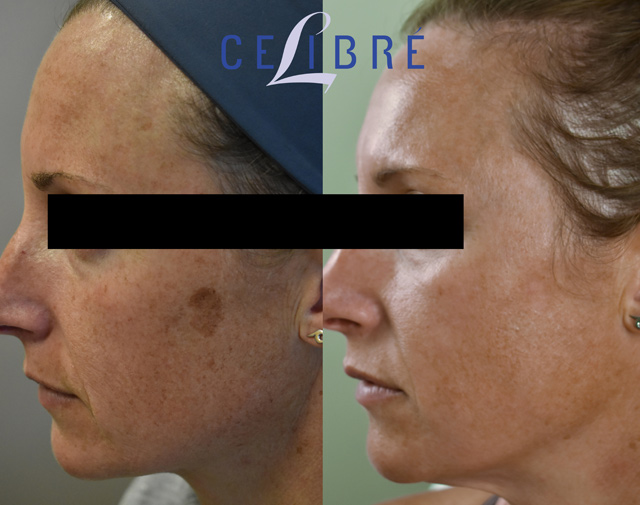
This image is property of celibre.com.
For those looking for more advanced treatments, laser treatments can be an effective option for treating sunspots. Laser treatments use focused beams of light to target and destroy the pigment in sunspots, allowing the body to naturally eliminate the damaged cells. Here are some common types of laser treatments for sunspot removal:
Intense pulsed light (IPL) treatments use broad-spectrum light to target and destroy the pigment in sunspots. IPL can effectively lighten sunspots and improve overall skin tone and texture. Multiple IPL sessions may be required to achieve the desired results, and the procedure is generally well-tolerated with minimal downtime.
Fractional laser resurfacing treatments involve creating microscopic injuries in the skin using laser beams. This stimulates the body’s natural healing process and promotes the growth of new, healthier skin cells. Fractional laser resurfacing can help fade sunspots and improve skin texture and tone. It may require multiple sessions for optimal results.
Q-Switched Nd:YAG laser treatments are highly effective for targeting and breaking down the pigment in sunspots. This type of laser treatment delivers short bursts of high-intensity light, which selectively heats and destroys the pigment cells. Q-Switched Nd:YAG laser treatments can lead to significant lightening of sunspots with minimal downtime.
Erbium laser treatments are another option for treating sunspots. This type of laser resurfacing treatment uses a laser beam to remove the outer layer of skin, allowing new, healthier skin to emerge. Erbium laser treatments can help fade sunspots and improve overall skin texture and tone. It may require some downtime for the skin to heal fully.
Cryotherapy is a treatment option that involves freezing the sunspots using extremely cold temperatures. This freezes and destroys the pigment cells, allowing the body to naturally eliminate them. Here are common cryotherapy methods used for sunspot removal:
Liquid nitrogen therapy is one of the most common cryotherapy methods for sunspot removal. Liquid nitrogen is applied to the sunspots using a cotton-tipped applicator or a spray device. The extremely cold temperature freezes the sunspots, causing them to crust and eventually fall off. Liquid nitrogen therapy may require multiple sessions for optimal results.
Cryoprobe is another cryotherapy method that uses a handheld device to deliver a precise and controlled amount of freezing gas to the sunspots. The cold temperature destroys the pigment cells, allowing for new, healthy skin to grow in their place. Cryoprobe treatments for sunspots are generally well-tolerated and require minimal downtime.
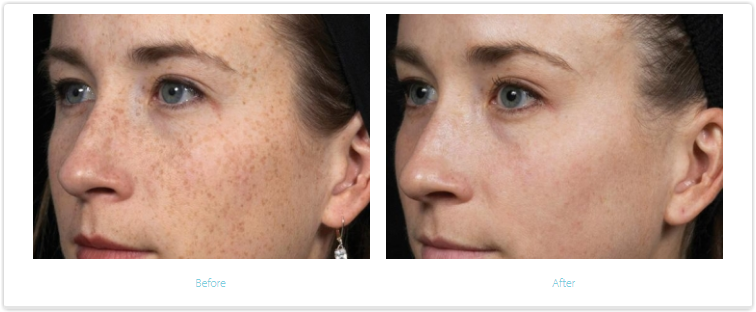
This image is property of www.lasercarespecialists.com.
Microdermabrasion is a non-invasive exfoliating treatment that uses a handheld device to gently remove the outer layer of dead skin cells. This can help fade sunspots and improve overall skin texture and tone. Microdermabrasion is generally well-tolerated and requires no downtime. Multiple sessions may be needed to achieve the desired results.
Dermabrasion is a more aggressive form of exfoliation that uses a rotating brush or diamond-tipped instrument to remove the outer layer of skin. This can help fade sunspots and improve skin texture and tone. Dermabrasion is typically performed by a dermatologist or plastic surgeon under local anesthesia. Downtime and recovery can vary depending on the depth of the treatment.
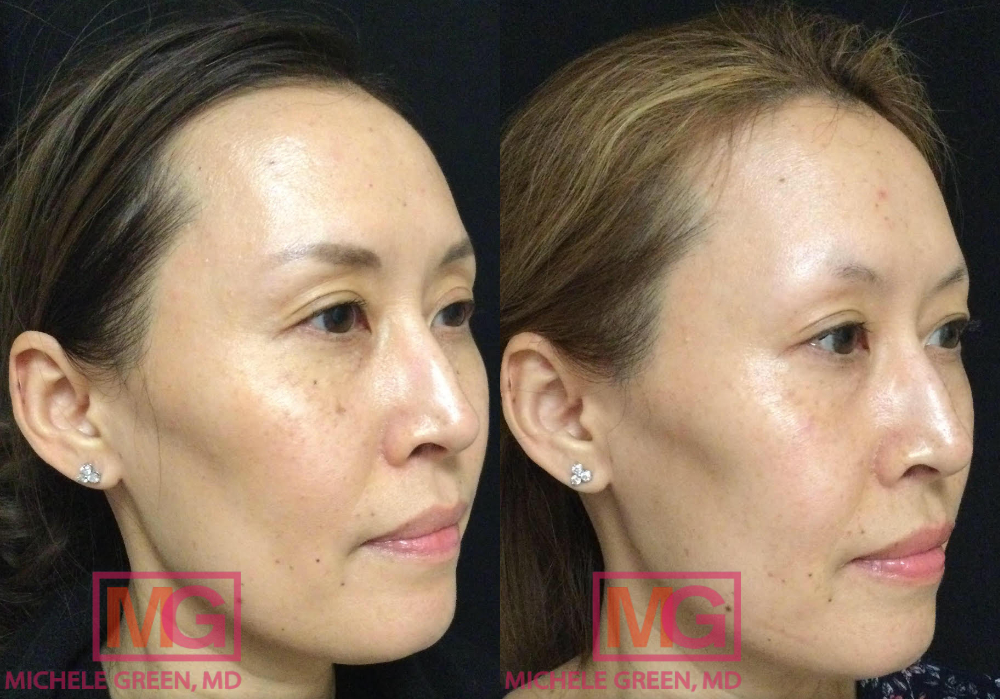
This image is property of www.michelegreenmd.com.
In addition to chemical peels, there are other spot treatments available that can target and lighten specific sunspots. These spot treatments often contain a combination of skin-lightening ingredients such as hydroquinone, kojic acid, and retinoids. They can be applied directly to the sunspots for targeted treatment.
If you prefer a more natural approach, there are several home remedies that may help fade sunspots. While the effectiveness of these remedies may vary from person to person, they are generally safe to try. Here are some common home remedies for sunspot treatment:
Lemon juice contains natural acids that can help lighten sunspots. Simply apply fresh lemon juice to the affected areas and leave it on for a few minutes before rinsing off. Remember to avoid sun exposure after applying lemon juice, as it can make your skin more sensitive to the sun.
Apple cider vinegar has natural astringent properties that can help fade sunspots. Dilute apple cider vinegar with water and apply it to the sunspots using a cotton ball. Let it sit for a few minutes before rinsing off. Be sure to do a patch test first to make sure your skin tolerates it well.
Aloe vera has soothing and skin-healing properties that can help fade sunspots. Apply fresh aloe vera gel to the affected areas and leave it on for 15-20 minutes before rinsing off. Aloe vera can also help moisturize and soothe the skin, making it a great natural remedy for sunspots.
Green tea contains antioxidants that can help reduce inflammation and lighten sunspots. Brew a cup of green tea and let it cool. Apply the cooled tea to the sunspots using a cotton ball or spray bottle. Leave it on for a few minutes before rinsing off. Green tea can also be consumed for additional health benefits.
Licorice extract has been used for centuries in traditional medicine for its skin-lightening properties. Apply a small amount of licorice extract to the sunspots and massage it gently into the skin. Leave it on for a few minutes or overnight before rinsing off. Licorice extract can help fade sunspots and even out skin tone.
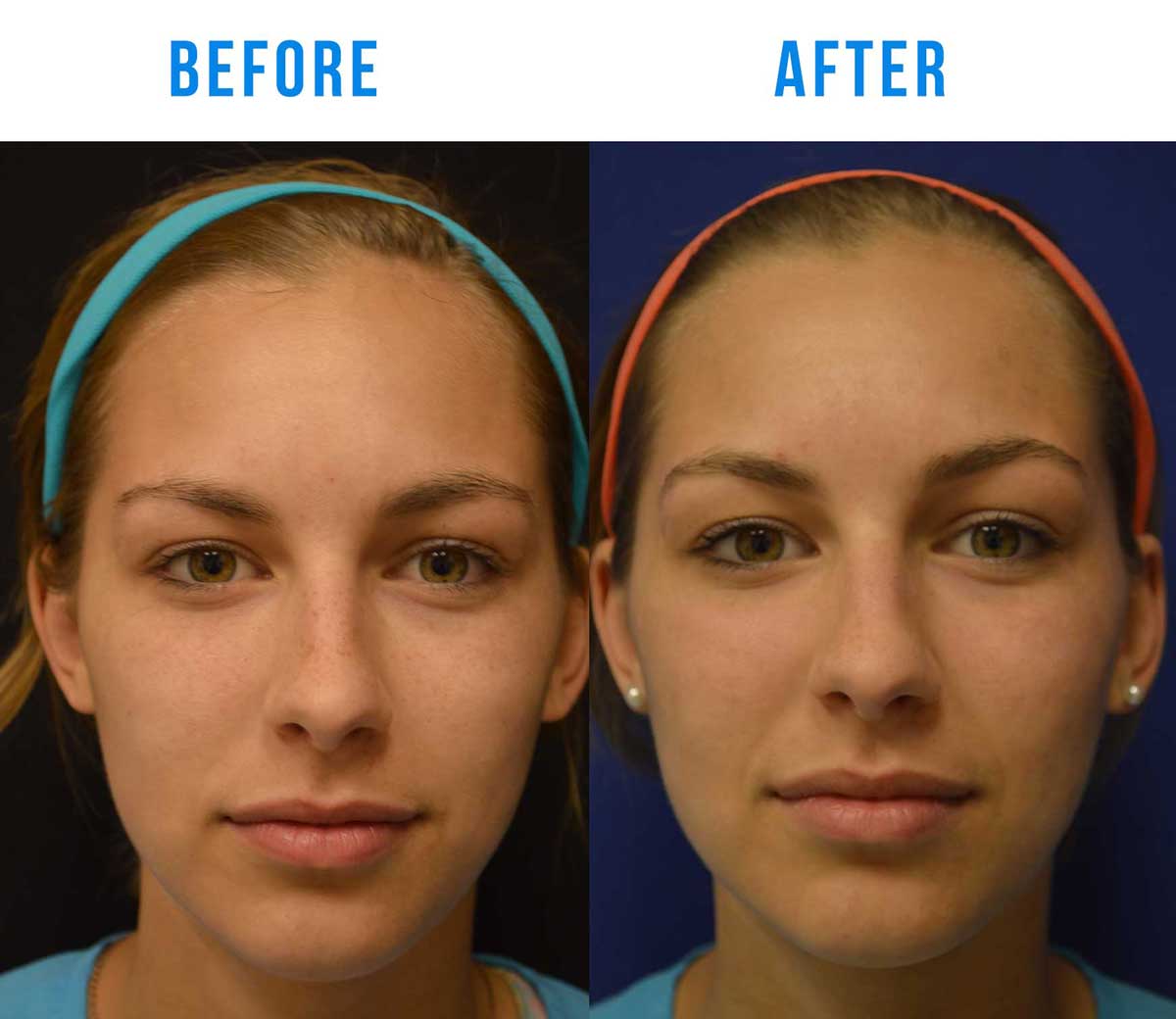
This image is property of www.precisionmdca.com.
Prevention is always better than cure when it comes to sunspots. Protecting your skin from the sun’s harmful UV rays can help prevent the development of new sunspots and reduce the risk of existing sunspots becoming darker. Here are some sun protection measures you can take:
Apply a broad-spectrum sunscreen with an SPF of 30 or higher to all exposed areas of skin, including the face, neck, hands, and arms. Reapply every two hours or more often if sweating or swimming. Choose a sunscreen that offers protection against both UVA and UVB rays.
Wear protective clothing, such as long-sleeved shirts, pants, and wide-brimmed hats, to shield your skin from the sun’s rays. Look for clothing with a high UPF (Ultraviolet Protection Factor) rating for added sun protection.
Wear a hat with a wide brim that shades your face, neck, and ears from the sun. A hat can provide additional protection to areas that are prone to sunspots, especially if you spend a lot of time outdoors.
Protect your eyes and the delicate skin around them by wearing sunglasses that block both UVA and UVB rays. Look for sunglasses labeled with 100% UV protection or UV400.
While many over-the-counter treatments and home remedies can help fade sunspots, it’s always a good idea to consult with a professional, such as a dermatologist or aesthetician, for a personalized treatment plan. They can assess your individual skin type and recommend the most suitable treatments and products for your specific needs. A professional consultation will ensure that you receive safe and effective treatment for your sunspots.
Remember, everyone’s skin is unique, and what works for one person may not work for another. Be patient and consistent with your chosen treatment method, and always prioritize sun protection to prevent future sunspots from forming. With the right approach and a little bit of time, you can effectively fade and manage sunspots, revealing a brighter and more even complexion.